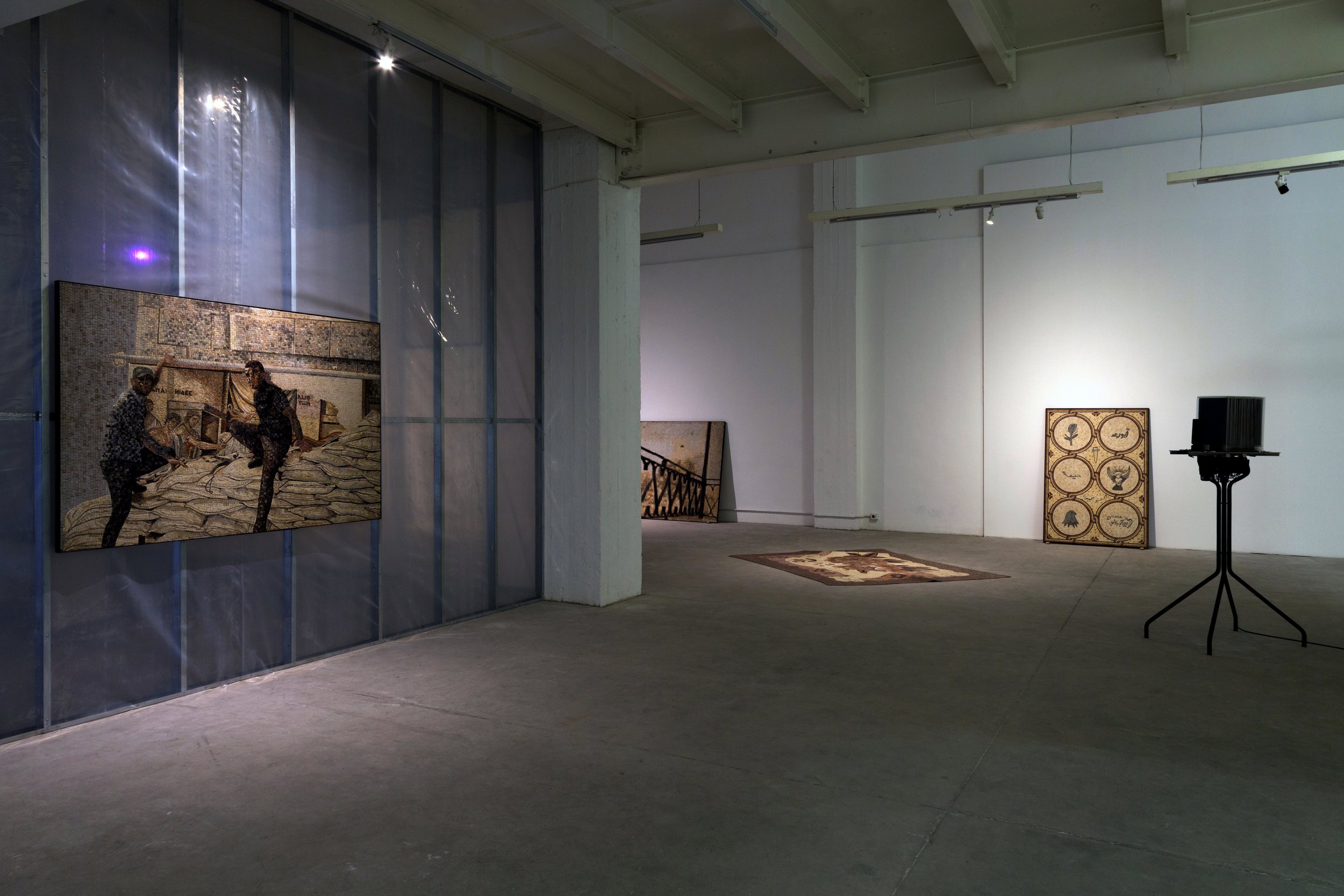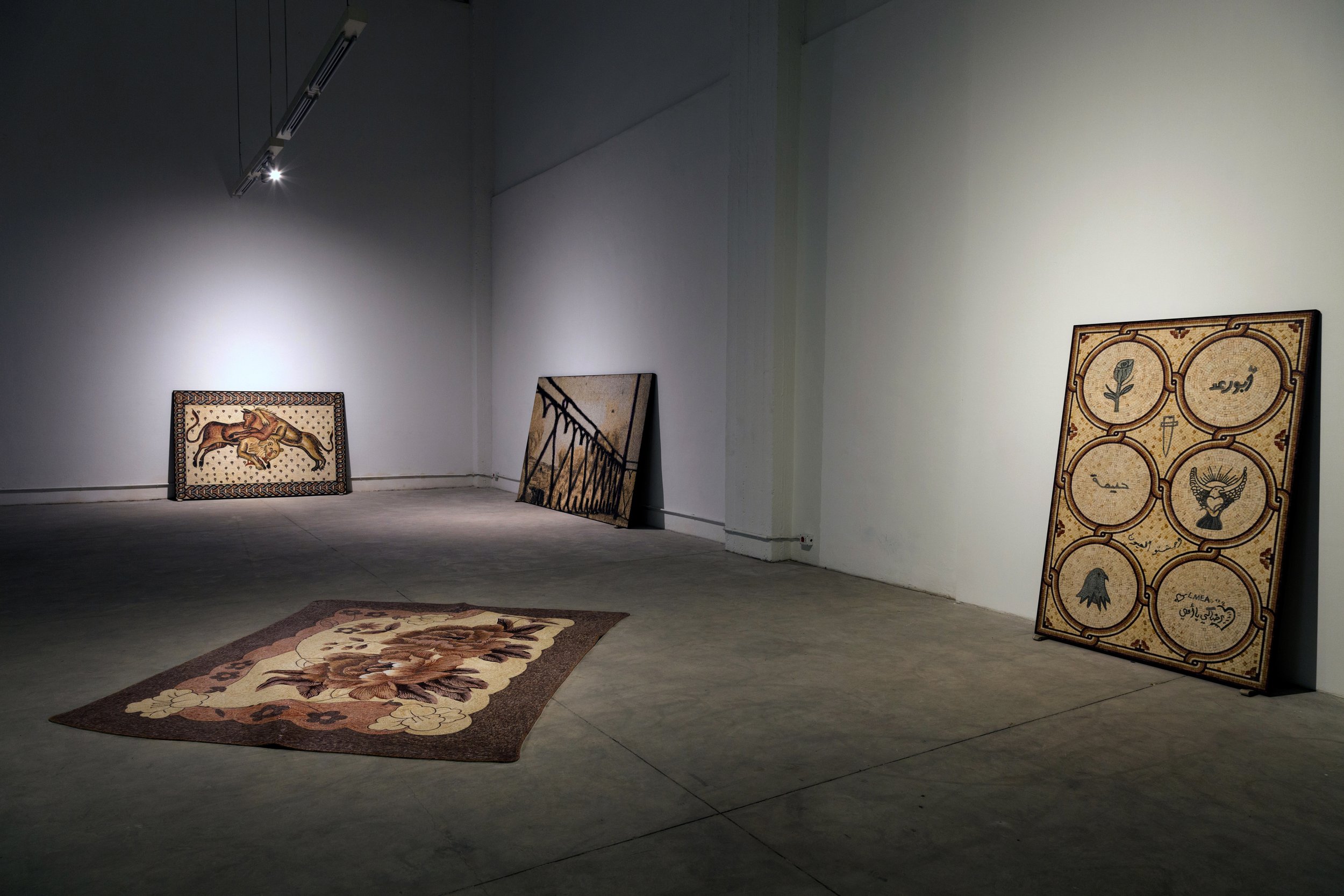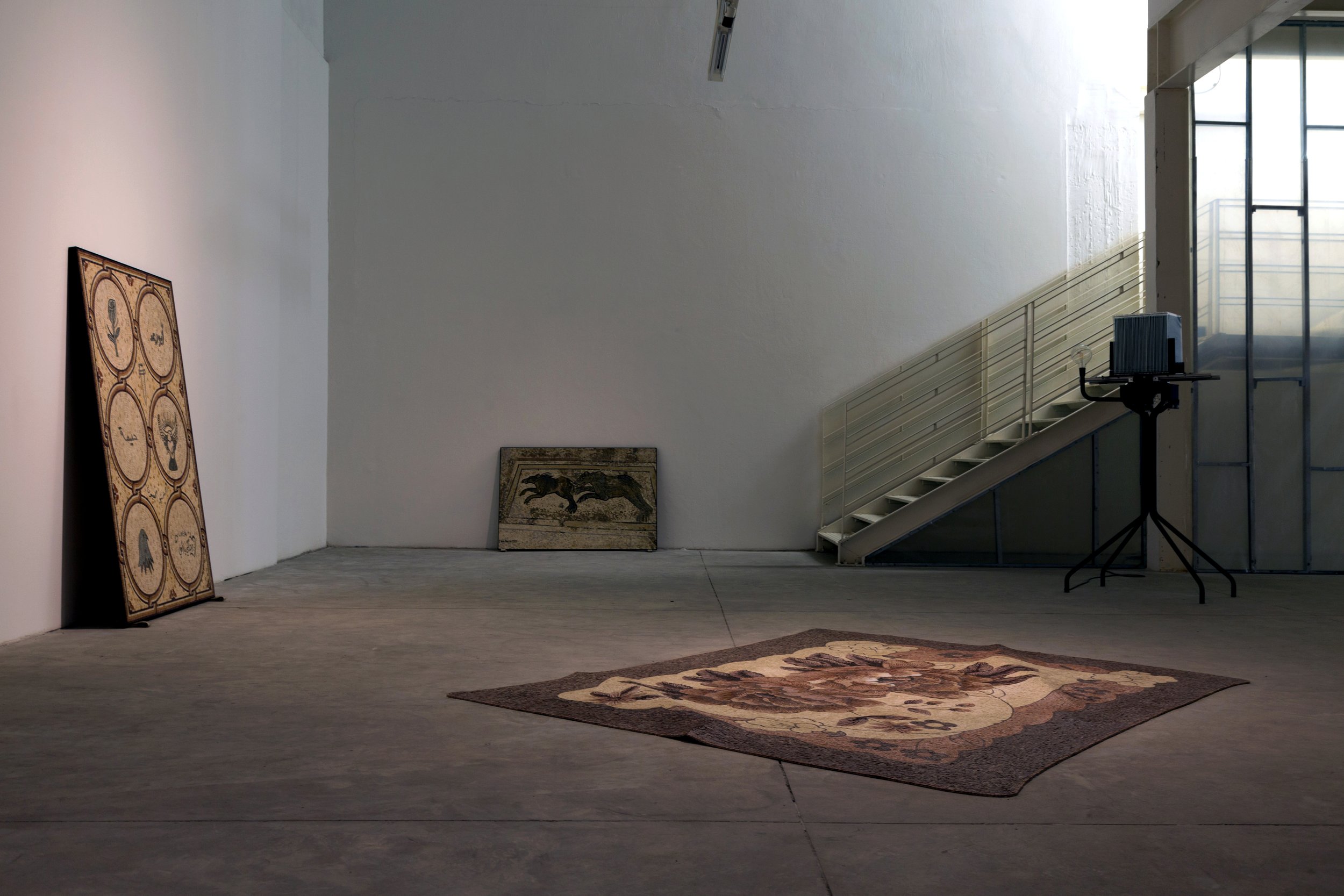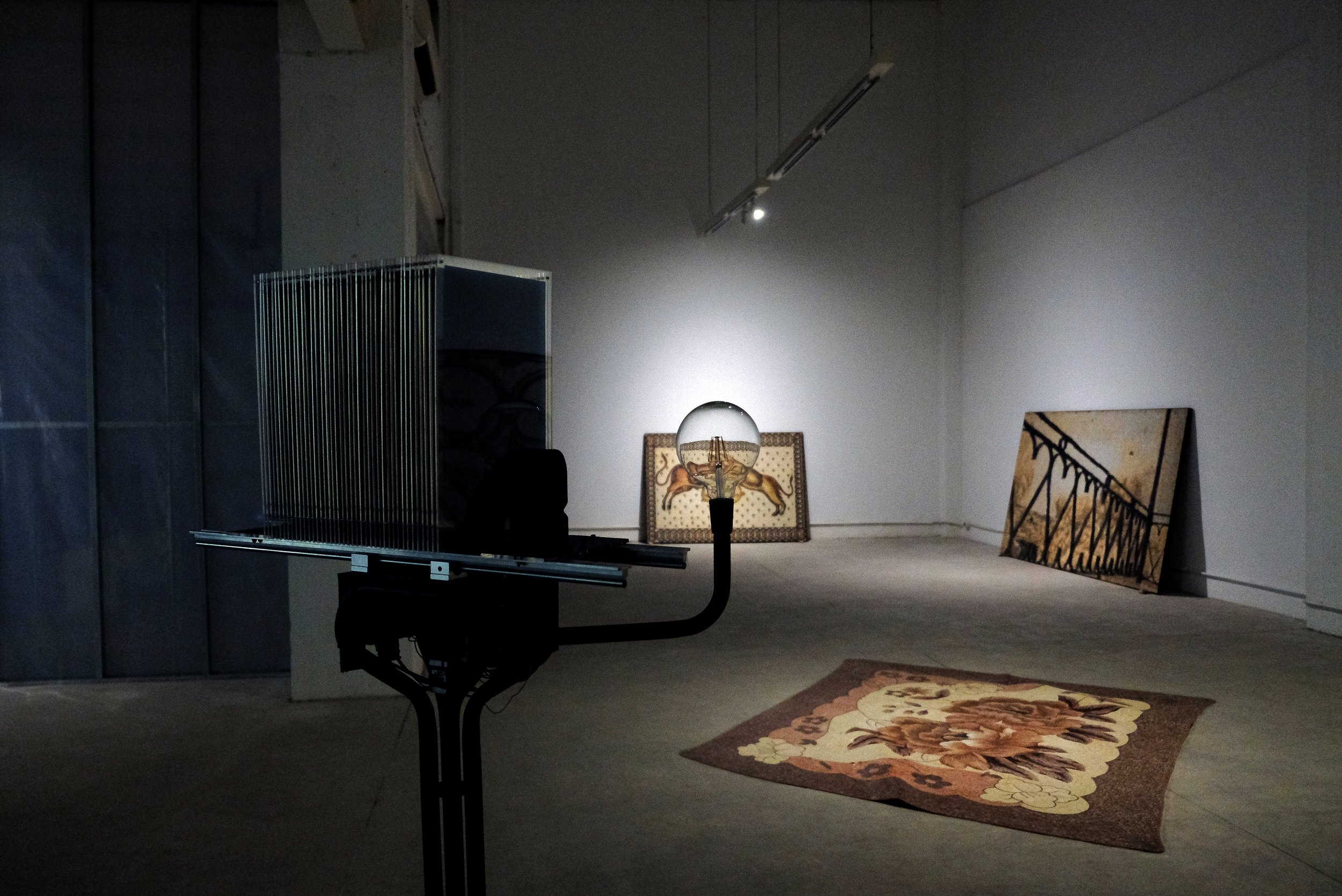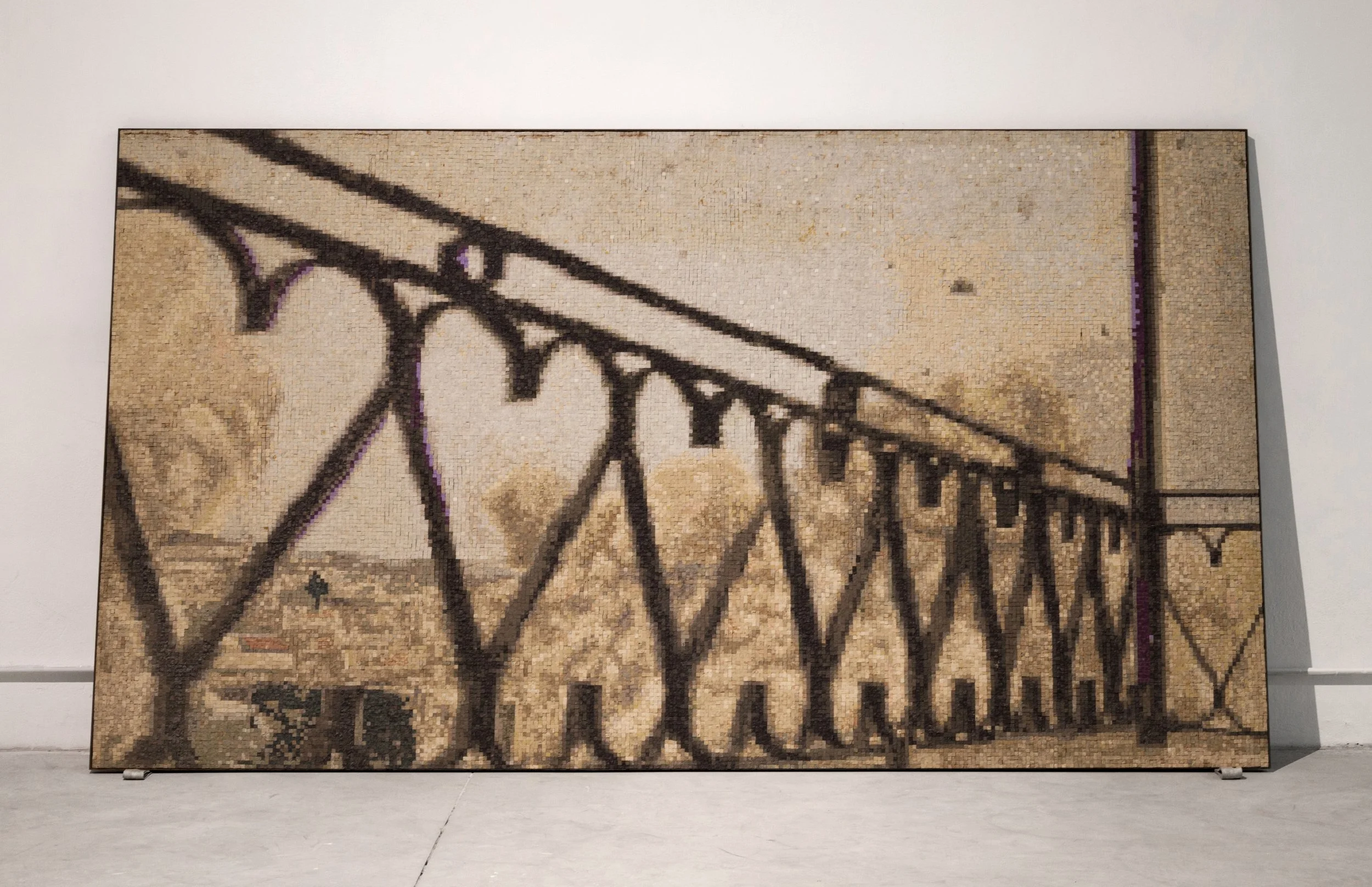Studies in Mosaics Series, Syria
Ahmad and Akram Protecting Hercules
Mosaic, 2 × 1.30 m
2019 – 2020
Ahmad and Akram Protecting Hercules depicts two men sandbagging a mosaic of Hercules to protect it from destruction at the Ma’arra Mosaic Museum in Syria, which was barrel bombed in June 2015 in a military operation. In a context of destruction and dispossession of Syria’s cultural heritage due to both ISIS’ and the regime’s looting activities and military operations, such images, mostly taken in a moment of urgency with mobile phones, become records of what might be destroyed or looted: indexes of what might no longer be there.
Master Mosaicist: Abou Amir
Fantastical Scene [sic]
Mosaic, 1.9 × 1.26 m
2019 – 2020
Fantastical Scene [sic] depicts wild bestiaries in hunt-like scenes, a common and familiar imagery for mosaics around the Mediterranean, with a subtle maneuver: a switching of the lion and bull’s heads while keeping the creatures’ bodies unchanged. In Arabic, lion is al assad and bull is al thawr. In mosaicspeak, such maneuver produces an error. The translation device, [sic], in the work’s title, calls attention to this error as it intentionally reproduces it in a fantastical whim that surrenders al assad to his eternal prey.
Looting Scene (Last seen 2014)
Mosaic, 85 cm × 1.3 m
2019 – 2020
Looting Scene (Last seen 2014) is based on an image attachment sent in a WhatsApp chat conversation. Upon a visit to the site where the mosaic initially lay, the image sender—some contemporary version of a monument man—noticed that the mosaic had vanished. He notifies the receiver on the other end of the phone by sending an image of the mosaic taken on a previous visit, with the poignant remark: I am sorry!!!!! The image acts as the evidence of a work that has been looted, and the mosaic a petrification of this moment of exchange.
Hunting Scene (Still from a YouTube video of a barrel bomb falling on Daraya)
Mosaic, 2.8 × 1.57 m
2019 – 2020
Hunting Scene (Still from a YouTube video of a barrel bomb falling on Daraya) depicts what is referred to in the title of the work, a terribly familiar bombing strategy employed by the Syrian regime coupled with now-familiar footage recorded on the spot by citizens and uploaded to YouTube. Each mosaic tessera is equivalent to one pixel of the original Internet image, an attempt to re-think the traditional Syrian mosaic practice from a contemporary digital perspective.
I’ll take touching you cold over never seeing you
Mosaic, 1.7 × 1.18 m
2019 – 2020
I’ll take touching you cold over never seeing you holds reproductions of tattoos from people I met in refugee camp 007, in the town of Qab Elias in the Bekaa valley, Lebanon. A form of body inscription that epitomizes the materialization of the index, a tattoo is meant to be shown and performed as a sign. Tattoos are marks of belonging and projections of the self into the future. A tattoo that reads “Abou Ra’ad” (Father of Raad) on the forearm of a 13-year old boy is already an initiation into an imagined future where he is a father of a son named Ra’ad; a future that might remain ink on skin now muted into stone.
Spring Cleaning
Mosaic, 2 × 2.2 m
2022
Spring Cleaning replicates in mosaic a minky blanket, typically made of polyester fibers. Light but bulky, such blankets are a common household item that travel with refugees and immigrants despite the journey, offering warmth and a sense of familiarity. In springtime, the blankets are hung outside in the sun to air and disinfect. There, these banners can be read as a visual code of displacement.
Below:
Installation shots of Confiscated Imaginaries at Beirut Art Center, 2022.
